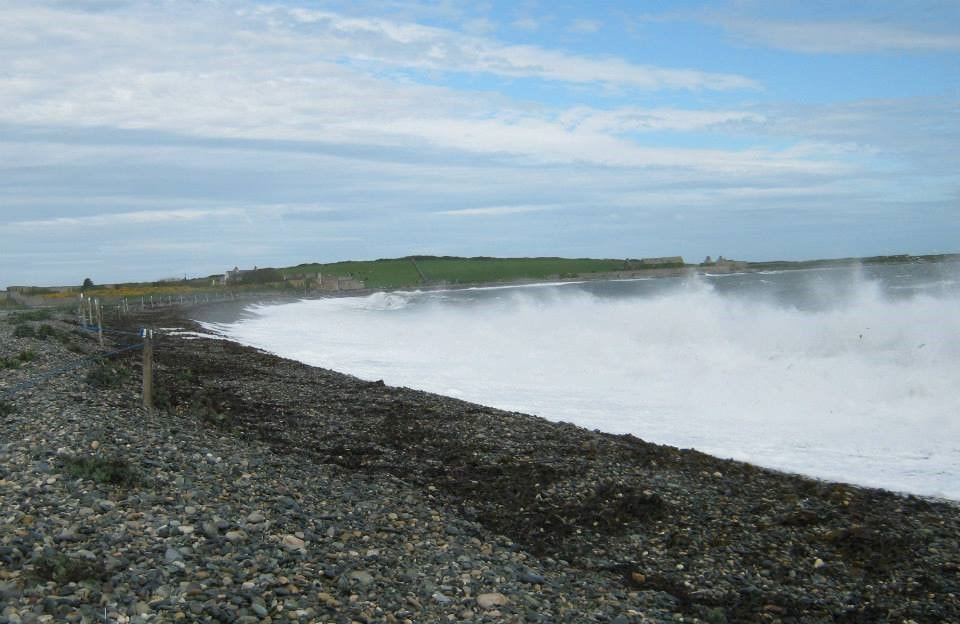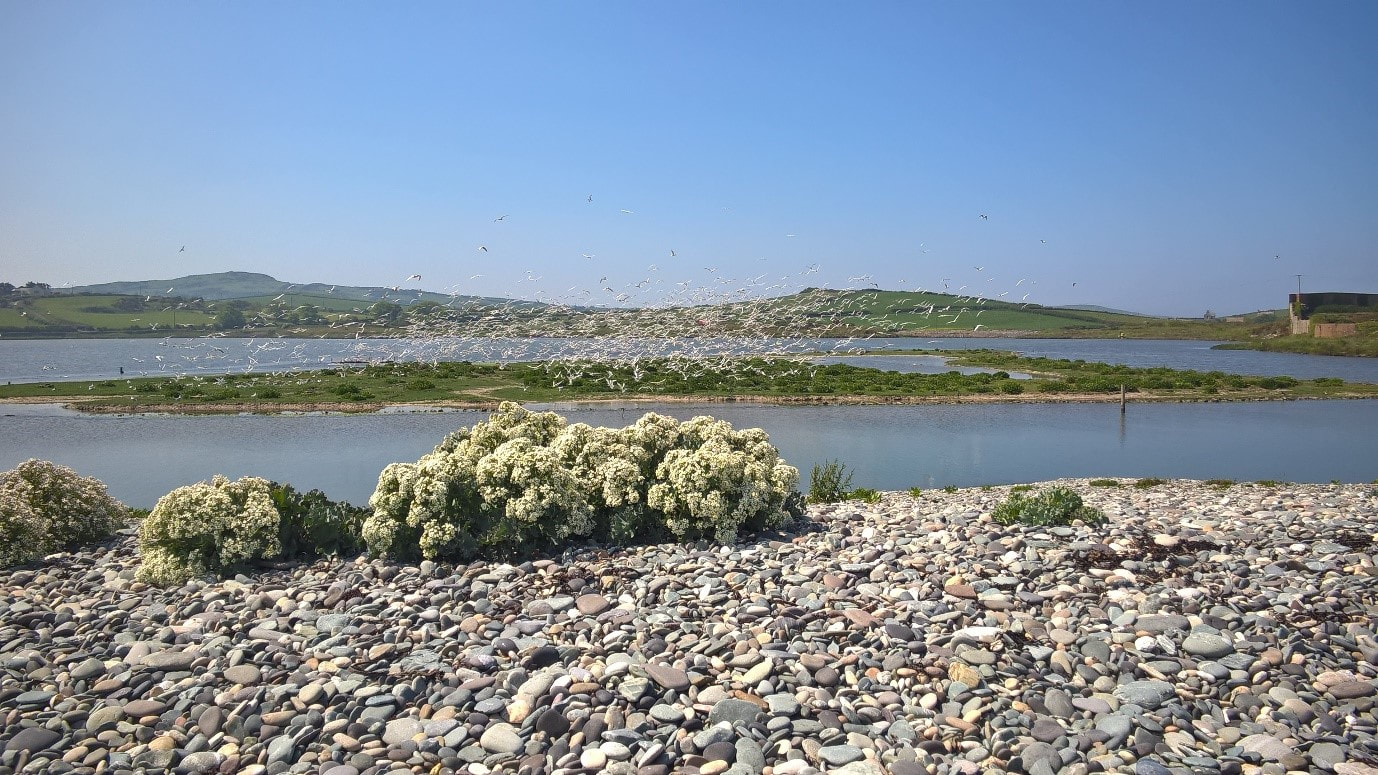|
Blog Post from Chris Wynne, Conservation Officer, North Wales Wildlife Trust Situated on a series of small islands in the lagoon, over the last decade Cemlyn’s tern colony, and in particular the Sandwich terns, have fared remarkably well. The five-year (2012-2016) average breeding population for Sandwich terns is 2400 pairs with an increasing trend. There is an average mean clutch size of 1.42 and productivity estimated at 0.73 over the same period. The success of the Sandwich tern colony is remarkable –the only Welsh colony, it currently stands at about 20% of the UK population and 3% of the world population. However, this has also resulted in competition for nesting space with other tern species and disturbance for the later breeding species, especially by near fledged chicks. 2017 also produced a dramatic and catastrophic break in the Sandwich tern’s breeding population with a small family of otters devastating the colony causing complete abandonment. We are currently preparing work to help us prevent a repeat of this in 2018. The outlook for common and Arctic terns is less rosy with the small mixed colony of 30-60 birds having a very low productivity (0.02 or thereabouts) in recent years. In addition, there is still a notable absence of roseate terns breeding at Cemlyn and although in 2015 a pair may have “possibly” bred – based on observations of behaviour - no confirmed nest was found. The importance of restoring and boosting the common tern colony to attract breeding roseate terns to a site is well established. Overall, the colony faces numerous threats; with predation from large gulls and mammals being the short-term cause while in the longer-term, climate change could reduce the availability of safe breeding habitat. The predicted increase in frequency and strength of winter storms could result in a breach to the shingle ridge at Cemlyn (which currently protect the tern islands) and as a consequence increase the risk of the colony flooding. The additional threat posed by the new nuclear power station at Wylfa, the main site for which is approximately a km away, is also substantial. Of particular relevance is the proposed breakwater at Porth y Pistyll which could lead to changes in coastal geomorphological process in Cemlyn, including accelerating and/or altering the movement of shingle. The Core Management Plan for the Cemlyn Special Protected Area (SPA)/Special Area of Conservation (SAC) identifies the need to provide adequate space and type of habitat on the islands to support the breeding colony – space for nests and normal bird behaviour. Over the decades, the Wildlife Trust has carried out a range of management activities to do this – including creating the western island from excavated material (late 1970’s), excavated a channel around the main islands to restrict access by people (late 1970s) and most relevant filled in a section of the main island to create further nesting space (1997)  Aerial view of Cemlyn islands and shingle ridge. Photo Credit: Chris Wynne Aerial view of Cemlyn islands and shingle ridge. Photo Credit: Chris Wynne During Summer 2017, and thanks to the Roseate Tern LIFE project, we were able to install 4 tern rafts. Although only used in a cursory way in the first year, we will be hoping for more interest from the terns in 2018. More significantly, in the early winter, the Wildlife Trust got to work on increasing the availability of nesting habitat on the main island. The main island is relatively small (0.4 ha) and includes a low-lying area of 0.05 ha i.e. c 12% of the island which is some 15-20 cm below the rest of the islands. This means, it is inundated for parts of the year and critically not available for nesting terns. Instead, loafing terns and a small number of feeding waders use it throughout the year. To rectify this situation and make the area habitable for nesting tens, we proposed to import varying sized, clean small rock to raise the profile of the low-lying area. Taking material from the shingle ridge itself was definitely not on! The final landform would include small channels similar to elsewhere on the islands and a low-lying area of about ¼ of the existing one will remain. Attention was also paid to biosecurity and pollution control measures. However, the tern colony does not occupy Cemlyn in isolation – the lagoon, shingle ridge are a SAC, and consideration needs to made in the management of the tern colony to not impact their key features. For the former, wide ranges of specialist brackish water invertebrates are present on or in the lagoon substrate.  To minimise physical damage to these SAC features and increased sediment in the water and following discussion with Natural Resources Wales it was planned to construct a short gangway from the ridge to the island. This gangway would allow stone to be carried across in powered barrow machinery. Photo Credit: Chris Wynne To cover the area (0.05 ha) and to raise it to the right level approximately 46 tons of material was imported via the gangway onto the island. The opportunity provided by the gangway and transport was made good use of. Sea beet on the island has increased considerably over the last decade and effectively occupies nesting space and provides cover for predators. We removed approximately 30% of bushes from some of the traditional common/Arctic tern areas on the east side of the island. This is in an attempt to favour these species nesting in this area. Through the summer of 2018, we will watching the use of the newly created areas by terns. We will also be keeping an eye on the presence of waders in the remaining low-lying areas and for any long-term impact on the lagoon.
0 Comments
|
More Blogs to Read
AuthorThis blog is maintained by various people from the project team. Archives
August 2020
Categories
All
|
Roseate Tern LIFE Project is supported by the LIFE Programme of the European Union
LIFE14 NAT/UK/000394 ROSEATE TERN
LIFE14 NAT/UK/000394 ROSEATE TERN









 RSS Feed
RSS Feed